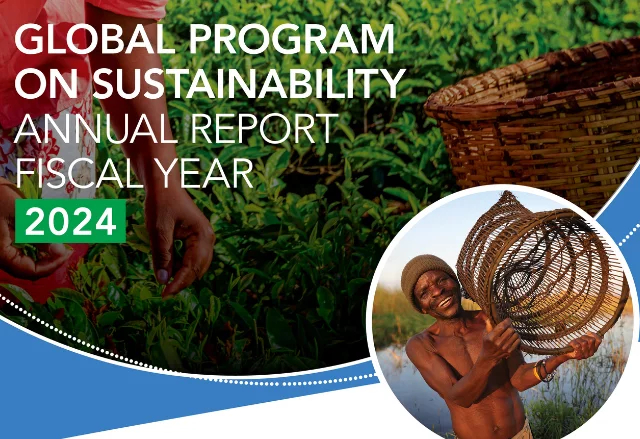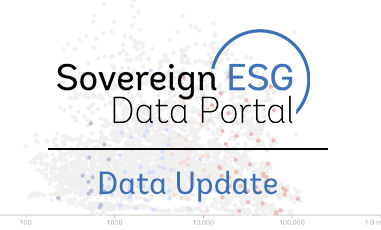 Source: Photo from Unsplash.
Source: Photo from Unsplash.
171
Indicators
64
Years
213
Economies
The World Bank curates and maintains a wide range of ESG data for policy makers, financial market participants and academic researchers. Use this portal to explore how countries compare to each other, create country profiles and learn about the latest research on ESG.
Featured items
For a full list of our featured items, see our Featured items page.
New
Blog post
Tax policy is a popular tool for governments around the world seeking to influence behavior, including for encouraging environmentally sustainable investment. But is it really an effective way to accelerate the transition to a greener economy? A Prosperity Insight Note, based on findings from a new World Bank database of Corporate Income Tax (CIT) incentives, reveals that tax incentives are rewarding polluting economic activities in more cases than they are promoting sustainability.
Read more
New
Blog post
A new capital markets issuer made its debut on the London Stock Exchange this month: The Climate Investment Funds (CIF) Capital Markets Mechanism or CCMM issued its USD500 million inaugural bond on January 22, 2025, which was six-times oversubscribed. CCMM is the first pure play climate issuer and the first multilateral climate fund to access the capital markets. This is the culmination of an 8-year journey from when the Clean Technology Fund or CTF, one of the two funds within CIF and a key multilateral sources of climate finance, explored how to operate in a more financially efficient manner.
Read more
New
Blog post
Emerging market and developing economies (EMDEs) face higher risks from climate change than advanced economies. If not addressed, these risks could threaten their stability, negatively impact economic opportunities and development outcomes, and even set back decades of work to end extreme poverty and boost prosperity in these countries.
Read more
Data deep dive
Discover the critical insights of the Finance and Prosperity Report 2024 through these compelling interactive graphs. Engage with these visualizations to explore the data, understand the trends, and gain valuable insights into the future of finance and prosperity.
Read more
Blog post
A Thai Recipe for Green Finance: What’s Cooking in the World of Sustainable Finance?
Read more
Blog post
Emerging market economies require USD 6.9 trillion to USD 7.6 trillion between 2023 and 2030 in order to achieve the Sustainable Development Goals. Additionally, intergovernmental organizations and research institutes worldwide estimate that global investments up to USD 275 trillion will be required between 2020 and 2050 to reduce greenhouse gas (GHG) emissions to net zero by 2050.
Sovereigns in emerging markets are recognizing the need for additional finance and exploring a myriad of options, including borrowing from the capital markets through dedicated sustainable financing instruments that earmark proceeds for specific types of projects. Since 2016, twenty-six emerging market (EM) sovereigns have issued green, social, and sustainability (GSS) bonds amounting to USD 125 billion, as of 30 June 2024. A key aspect of these labeled bonds is that issuers need to report the use of proceeds and the social and environmental impacts of projects and activities supported.
Read more
Get the latest data stories and updates to the portal
Subscribe to our newsletter
Data stories
For a full list of our data stories, see our Data stories page.
New
Portal update
The Sovereign ESG Data Portal is updated with the most recent data in the ESG landscape. This update increased the number of indicators to 171, available for 213 economies up to 2023. The World Bank is continuously refining the ESG framework and empowering users to make their own comprehensive analyses. Curious what’s new? Read about the details in this data story.
Read more
New
Putting data to work
Latin America’s trend towards sustainability enhancing financial instruments is on the rise. New data allows for sub-annual, sub-national and context-tailored deforestation KPIs.
Read more
New
Putting data to work
Showcasing the Peruvian Amazon, we see how cloud cover challenges can be tackled to monitor forest changes more presicely using a new data product.
Read more
Portal update
This March, our Sovereign ESG Data Portal got expanded with new country data and extended timelines. It is now possible to gain insights into our 135 indicators with the most recent data up to 2022.
Read more
San Marino
San Marino
Income classification
High income
Geographic region
Europe & Central Asia
Climate profile
Temperate
Indicator
Value
Year
Population, total
33,860
2023
Population growth (annual %)
0.31%
2023
Surface area (sq. km)
60
2022
GDP (current US$)
1.83 billion
2022
GDP growth (annual %)
7.90%
2022
GDP per capita (current US$)
54,264.57
2022
Inflation, consumer prices (annual %)
1.05%
2017
Latest publication
For a full list of our research, see our Publications page.

New
Report
GPS Annual Report
As we navigate accelerating and interlinked crises—from climate change, biodiversity loss, and pollution, to debt, rising cost-of-living, and conflict—it has never been more urgent to measure and value nature to make better decisions for development. Many people in developing countries depend on natural capital, such as forests, water, farmland, and soils, for jobs, raw materials, and food security. The Global Program for Sustainability (GPS) is at the forefront of global efforts to measure, quantify, and integrate nature and sustainability into economic decision-making to equip policy makers with the information they need to “make nature count” on balance sheets.
Feb 25, 2025
Full report









